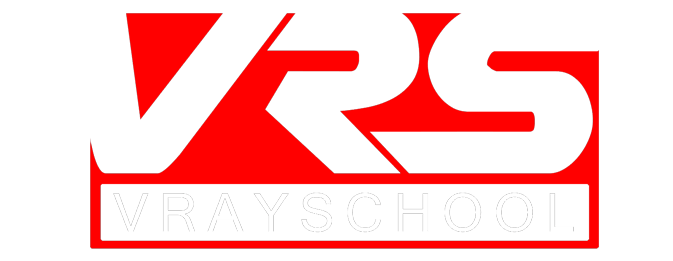Hey guys, welcome back for another tutorial. Today, I’ll be showing you how to create a quick professional studio lighting setup using VRay as our primary renderer.
Studio Lighting Setup
The purpose of learning to create a studio setup is to make our subjects expressive or emotive. We want to paint them with lights in such a way that it brings out their own unique character. Take a look at any of the Renaissance paintings, and you’ll notice the beauty of light play within them. The tradition continues today, and the studio is where we can learn to master light. Therefore, we’ll be using the same approach as professional photographers to light our CG subjects. A physically correct method in which we’ll create the background, lights and camera just like a real studio environment.
If you’ve ever seen a real studio, you’d have noticed the use of various gobo lights and a smooth edgeless background. We’ll be taking a look at the function of these lights and their uses. In the end we’ll have a simple setup that you can use to get an awesome studio rendering.
3-Point Lighting
So let me jump in and show you the basics. The most important principle for professional lighting is the 3-Point Lighting System. It involves using 3 lights at different intensities and angles to light our subject. In order of their strengths, they are:
- Primary or Key light
- Secondary or Fill light
- Tertiary or Back light
The Key light is the main light responsible for illuminating our subject. The Fill light balances and softens the shadows cast by the key light. Lastly, the Back light makes sure there are no overly dark areas in the scene, while also giving a definition to the silhouette of our subject.
Chromatic Contrast
Another important principle applied in photography is the notion of chromatic contrast. ‘Chroma’ means color, and hence this signifies the use of different colored lights to boost the perceived contrast of our subject. You might have noticed this concept being used on all the Hollywood blockbusters of late, especially for the movie posters. Opposing hues on the color wheel work best, one assigned to the key light, while the other to the fill. Blue and Orange are often the most used pair, and these are the ones we’ll be using in our setup as well.
Constructing Our Studio Lighting Setup
Now that you’ve understood the basic principles essential for correctly lighting a subject, we’ll begin creating our studio. For this lesson, I’ll be using a Buddha model as our main subject. And for building a background for the studio, that can be achieved in a few simple steps:
- Create a ‘C’ shape with a flat bottom in your left viewport. Make it twice as high as the subject. You can smoothen the edges of the shape with the fillet control.
- To give our shape some geometry, add an extrude modifier with the normals on the inner side. Make sure that it’s wider than its height.
- Place the subject in the middle of the background and create a VRay Physical Camera in front as well. Focus on the subject and frame the camera as you see fit. The settings I’ve used for the exposure are f/5.6, shutter of 1/200secs and ISO of 500. I’ve also set a slightly bluish white balance for a warm render.
- Assign a simple white VRayMtl with a value of 253 to the background. Avoid using completely black or white values for materials as it might yield unrealistic results.
Turning On The Lights
And now we’ll be focusing on creating our 3 point lighting system with chromatic contrast.
- Create 2 Vray area lights on either side of the studio background, facing our subject. The bigger the area lights, the softer the shadows. I’ve used a size of 160cm x 160cm here. These two lights will serve as our key and fill light.
- According to your preference, you can choose either blue or orange as your primary light. In this case I’ve set the right light as my primary with a multiplier of 50 and a warm orange color, or a temperature of 4000K.
- For your Fill light, set its intensity to 40 and add a cool blue color or a temperature of 8000K for this light. The fill is always lower in intensity so as to soften the primary shadows, while not creating shadows of its own.
- As for the Back light, we’ll be setting it up over our subject as a wide area light, but instead of pointing down it’ll be aimed at the ceiling of our background mesh. This will create a nice bounced light to soften the entire scene. We’ll set its intensity to 10 with a neutral color.
Render Setup
The rendering setup for our studio is fairly easy to setup with VRay. I’ll explain the settings below:
- To avoid overexposure, set the color mapping to exponential. You can also turn off the AA filter if you’ll be rendering with resolutions higher than 2k.
- For the GI engines, choose Irradiance Map and Light Cache respectively. Furthermore, a contrast value of 0.5 will give the GI pass a little extra contrast.
- Set the Irradiance Map preset to Medium, and set the color and normals threshold to 0.25 for optimum quality.
- A value of 1000 for Light cache is good enough, but you can always increase it for higher resolution renders.
- Set the Min Shading Rate or Global subdivs multiplier to 3.0 or higher.
Ok then, now you’re all set to render any model in a professional studio lighting setup on par with real photographic results and therefore perfect for product renderings. Finally, don’t forget to check out my other posts. Or check out these pins here for more studio lighting setup inspiration. Till then, experiment and have fun with your new studio setup.


